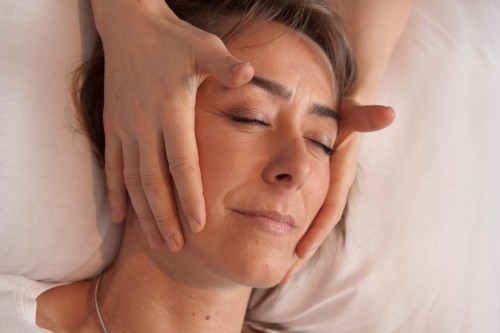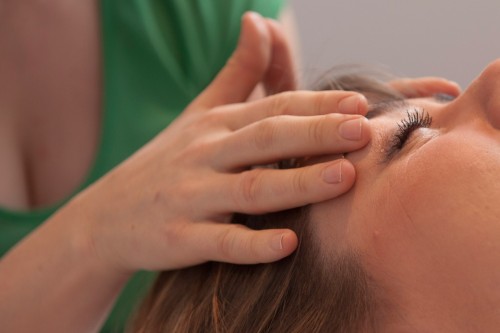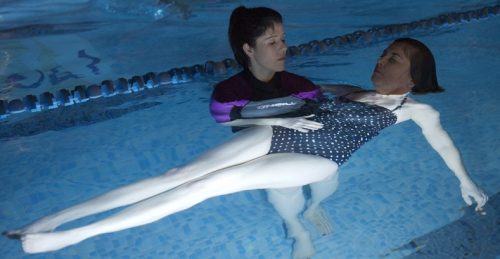Craniosacral Therapy - SafeHaven Trauma Centre
Craniosacral Therapy
Craniosacral Therapy (CST) is a type of bodywork therapy that can create dynamic improvements by releasing strain patterns running deep within the body, relieving pain and dysfunction and improving whole-body health and performance.
People generally use craniosacral therapy treatment to relieve symptoms of pain and dysfunction; from stress and tension related disorders, musco-skeletal pain, migraines and headaches, pain and spinal cord injuries to other acute and chronic conditions, including:
- Migraines & Headaches
- Chronic Neck and Back Pain
- Stress & Tension Related problems
- Ear & Jaw problems
- Post-viral fatigue
- Accidents and Falls
- Whiplash
- Motor-Coordination Impairments
- Central Nervous System Disorders
- Orthopedic Problems
- Traumatic Brain and Spinal Cord Injuries
- Scoliosis
- Learning Disabilities
- Chronic Fatigue
- Emotional Difficulties and Dependency
- Fibromyalgia and other Connective-Tissue Disorders
- Fertility and Gynaecological issues
- Neurovascular or Immune Disorders
- Post-Traumatic Stress Disorder
- Post-Surgical Dysfunction

Craniosacral Therapy
Somato-Emotional Release (SER)
SER was a term coined by Dr John E. Upledger to describe a naturally occurring process often observed during craniosacral therapy treatment. It describes the natural phenomenon whereby an emotional release occurs simultaneously with a release in the tissues of the body, during a craniosacral therapy session. The SER can be associated with memories of past events and the process aids the release of stress and emotion from the body.
IMPORTANT: SER is NOT psychotherapy. A craniosacral therapist is not trained to manage the emotional release from a psycho-therapeutic perspective. Therefore we recommend where there is considerable psychological stress or trauma your craniosacral therapist should also be trained in either psychotherapy, clinical or counselling psychology.
How CST works
Your craniosacral system is comprised of the membranes and fluid that surround and protect your brain and spinal cord (your central nervous system).
The fluid that surrounds your brain and spinal cord pulsates rhythmically (around 10 cycles a minute). A craniosacral therapist tunes into the craniosacral system to feel this rhythm to determine its’ rate, amplitude, quality and symmetry through the body, factors which also reflect information on a person’s general health. Areas where the rhythm is restricted indicate where disease or injury maybe having an unfavourable effect on your craniosacral system and in turn your central nervous system.
The therapist then works to release osseous and soft tissue restrictions to improve the flow of fluid and restore a balanced rhythm thoughout, improving your body’s innate ability to self-correct and heal.
Treatment improves your craniosacral rhythm and releases areas of excess strain and tension throughout your body, alleviating many neurological, physical and emotional problems and restoring health and well-being.

Craniosacral Therapy
Why the craniosacral system becomes restricted
Every day your body endures stresses and strains that it must work to compensate for – emotional as well as physical. Often the way our body compensates is to cause change in our body tissues involving a tightening or increased level of tension, which frequently distorts the craniosacral system. These distortions around the brain and spinal cord can create a barrier to the healthy performance of the central nervous system, and potentially every other system it interacts with.
Brief History of CST
CST started with the work of osteopath Dr William Sutherland in the early 1900’s in the USA. Dr Sutherland noticed the subtle rhythmic pattern that we know today as the craniosacral rhythm.
Sutherland found light touch on the skin surface could influence areas of restriction in the body to ease and release tension and then restore the craniosacral rhythm to optimum.
It was then during the 1970’s that osteopathic physician Dr John E. Upledger began research on the craniosacral rhythm in his role as Professor of Biomechanics at the College of Osteopathic Medicine at Michigan State University. Here he explored the influence of therapy on the craniosacral system (the bones, soft tissues and fluid that surround and nurture your brain and spinal column). His research also showed how light touch therapy could evaluate and treat this system and have positive effects on the brain and spinal column. It was Dr Upledger that subsequently coined the term ‘craniosacral therapy’, in reference to his bio-mechanical approach to the treatment of the craniosacral system.
Dr Sutherland’s work was also developed by others, such as Becker, Stone and Fulford, and in the 1980’s Franklyn Sills. Craniosacral therapy has thus developed into two different approaches, known as bio-mechanical and bio-dynamic.
Here at SafeHaven we use a predominantly bio-mechanical approach, integrated with bio-dynamic principles and method.
We also offer the option for Bio-Aquatic Craniosacral Therapy at certain points during the year.


